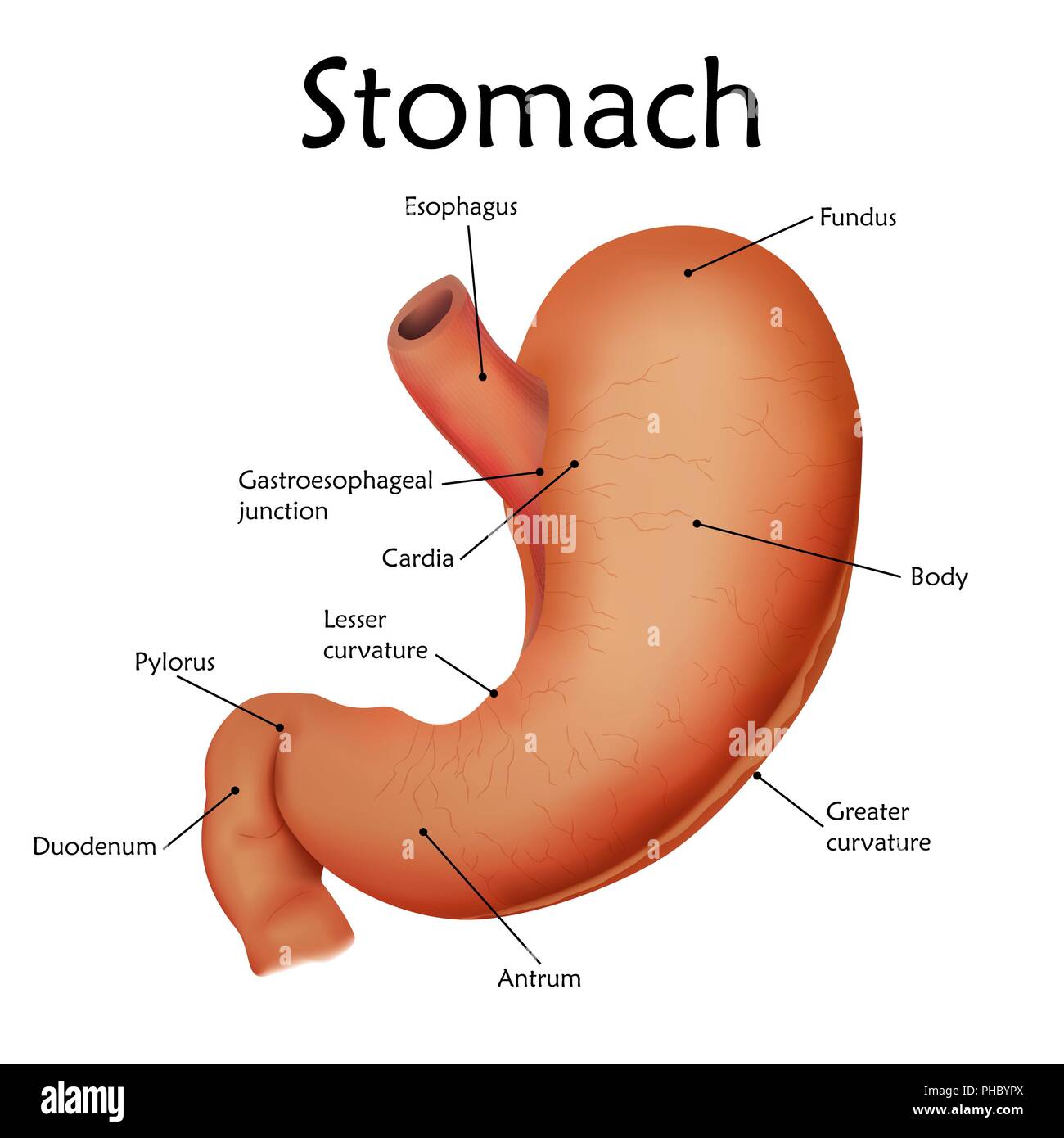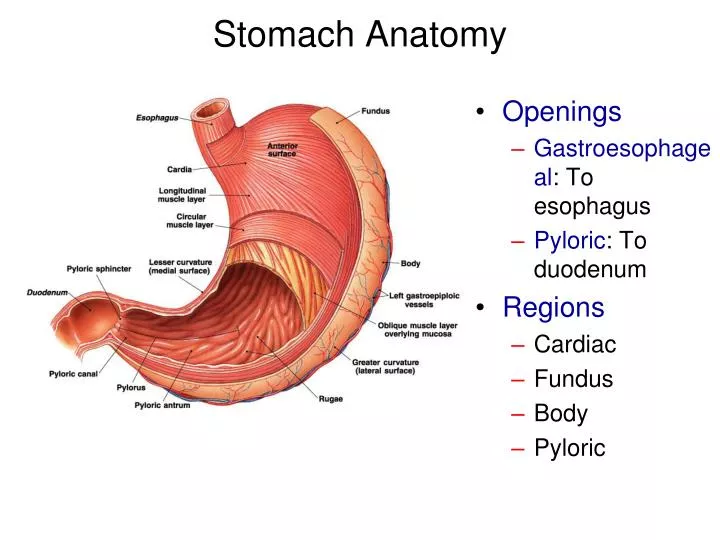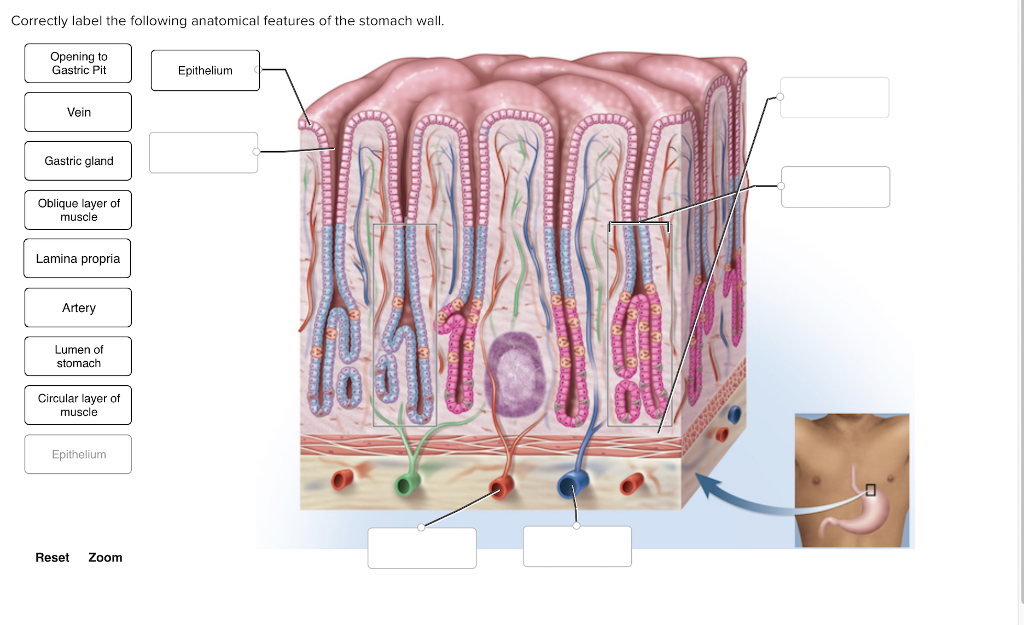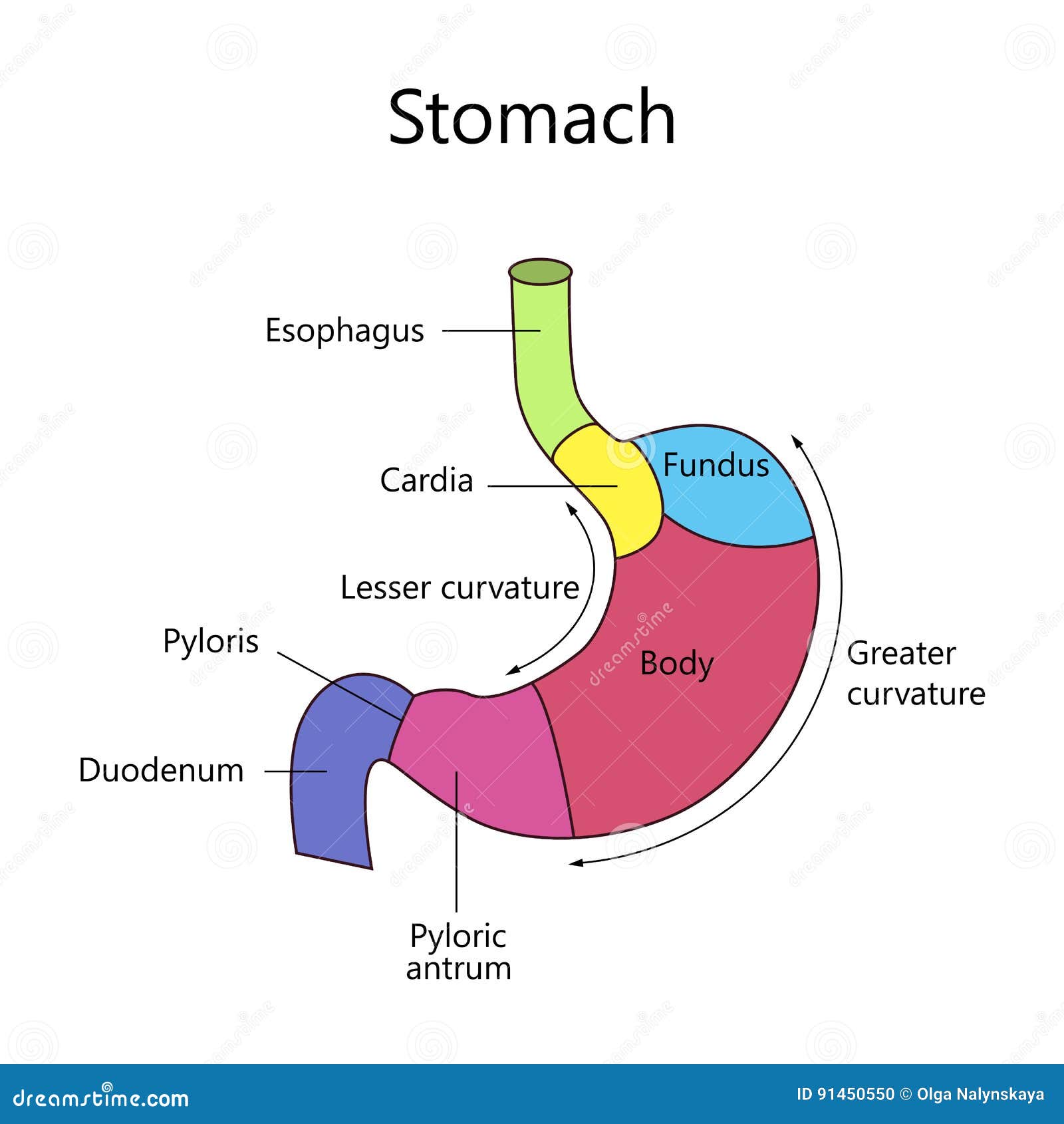
Barrio Lechuguilla papi stomach anatomy diagram Productividad en un día festivo Jugando ajedrez
23.4 The Stomach Learning Objectives By the end of this section, you will be able to: Describe the functional anatomy of the stomach Identify the four main types of secreting cells in gastric glands, and their important products Explain why the stomach does not digest itself

PreLab 8 Human Anatomy Lab Manual
The stomach has four major regions: the cardia, fundus, body, and pylorus. The addition of an inner oblique smooth muscle layer gives the muscularis the ability to vigorously churn and mix food. The convex lateral surface of the stomach is called the greater curvature; the concave medial border is the lesser curvature.

Human stomach with labels, illustration Stock Photo Alamy
The innermost layer of the stomach muscle, the inner oblique layer, aids in digestion by grinding the food together with digestive juices. The product is a substance known as chyme, a mixture of.

PPT Stomach Anatomy PowerPoint Presentation, free download ID1940155
There are four main regions in the stomach: the cardia, fundus, body, and pylorus (Figure 21.4.1 21.4. 1 ). The cardia (or cardiac region) is the point where the esophagus connects to the stomach and through which food passes into the stomach. Located inferior to the diaphragm, above and to the left of the cardia, is the dome-shaped fundus.

Simple stomach diagram Stomach structure Stomach Anatomy Stomach diagram, Digestive system
The stomach is an organ of the digestive system, specialized in the accumulation and digestion of food. Its anatomy is quite complex; it consists of four parts, two curvatures and receives its blood supply mainly from the celiac trunk. Innervation is provided via the vagus nerves and the celiac plexus .

Human Stomach Anatomy Vector Illustration With Labels Stock Illustration Download Image Now
Stomach histology Author: Egle Pirie BSc (Hons) • Reviewer: Nicola McLaren MSc Last reviewed: October 30, 2023 Reading time: 13 minutes Recommended video: Stomach histology [29:47] Have a thorough look at stomach under the microscope. Body of stomach Corpus gastris 1/5 Synonyms: Gastric body, Corpus of stomach , show more.

Pin by Juliette Vanheule on •i n f i r m i è r e• Medical anatomy, Medical school essentials
What is the stomach? The stomach is a J-shaped organ that digests food. It produces enzymes (substances that create chemical reactions) and acids (digestive juices). This mix of enzymes and digestive juices breaks down food so it can pass to your small intestine. Your stomach is part of the gastrointestinal (GI) tract.

The Stomach Organs Parts, Anatomy, Functions of the Human Stomach
Anatomical Structure Divisions of the Stomach The stomach has four main anatomical divisions; the cardia, fundus, body and pylorus: Cardia - surrounds the superior opening of the stomach at the T11 level. Fundus - the rounded, often gas filled portion superior to and left of the cardia. Body - the large central portion inferior to the fundus.

Ingestion and Digestion The Digestive System MCAT Biology Review
Label on a diagram the four main regions of the stomach, its curvatures, and its sphincter Identify the four main types of secreting cells in gastric glands, and their important products Explain why the stomach does not digest itself Describe the mechanical and chemical digestion of food entering the stomach

Stomach(human anatomy and physiology) definition, different parts and function of stomach
The stomach is lined by a mucous membrane that contains glands (with chief cells) that secrete gastric juices. Two smooth muscle valves, or sphincters, keep the contents of the stomach contained: the cardiac or esophageal sphincter and the pyloric sphincter. The arteries supplying the stomach are the left gastric, the right gastric, and the.

Solved Correctly label the following anatomical features of
Digestive system diagram Yaja' Mulcare The digestive organs in the abdomen do not work alone. They depend on organs in the mouth and chest, such as the esophagus and tongue, to help chew, move.

stomach model Anatomy models labeled, Anatomy models, Human anatomy and physiology
Start studying LABEL THE STOMACH. Learn vocabulary, terms, and more with flashcards, games, and other study tools.

Internal Structure Human Stomach Stock Vector Illustration of medical, antrum 91450550
Anatomy of the Stomach. The stomach is a J-shaped organ in the upper belly (abdomen). It's part of the digestive system. It's between the end of the food pipe (esophagus) and the start of the first part of the small bowel (duodenum). The stomach is much like a bag with a lining. The stomach is made of these five layers: Mucosa.

Stomach part01
Stomach, saclike expansion of the digestive system, between the esophagus and the small intestine; it is located in the anterior portion of the abdominal cavity in most vertebrates. The stomach serves as a temporary receptacle for the storage and mechanical distribution of food before it is passed into the intestine.

The Anatomy of the Abdomen Human Stomach Health Life Media
Given below is a labeled diagram of the stomach to help you understand stomach anatomy. The stomach is divided into four parts. These include: Cardia Fundus Body Pylorus Cardia refers to the section of the stomach that is located around the cardiac orifice. The lower esophageal sphincter lies at the junction where the esophagus meets the stomach.

Stomach Anatomy Illustration Stock Vector Illustration of biology, medicine 194368838
The function of the digestive system is to break down the foods you eat, release their nutrients, and absorb those nutrients into the body. Although the small intestine is the workhorse of the system, where the majority of digestion occurs, and where most of the released nutrients are absorbed into the blood or lymph, each of the digestive system organs makes a vital contribution to this.